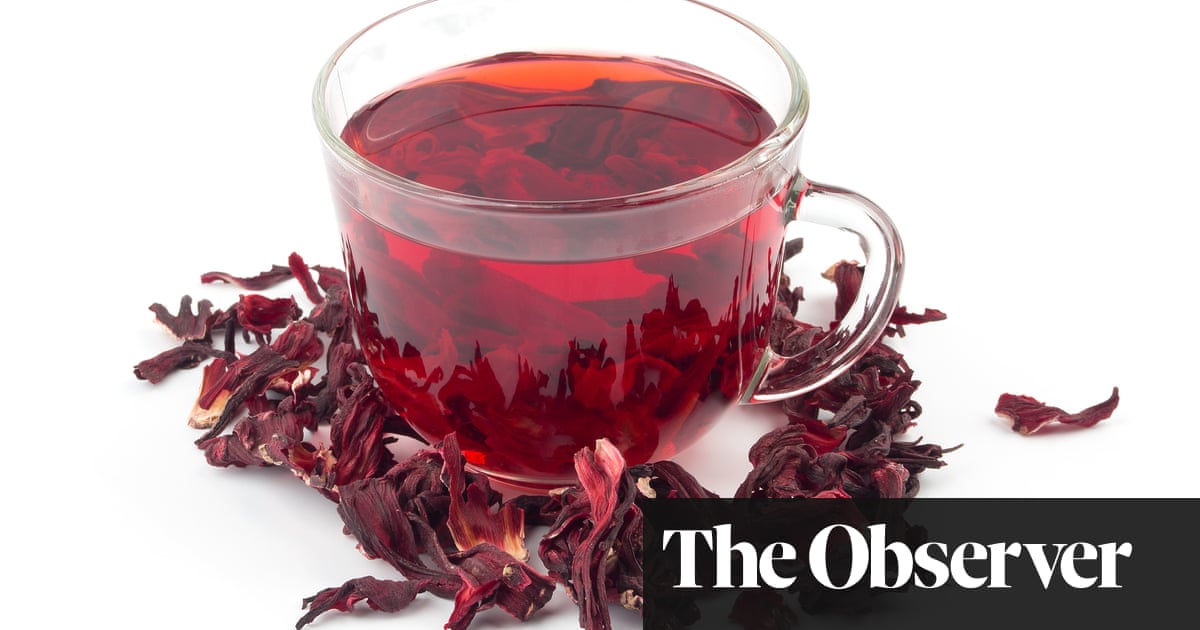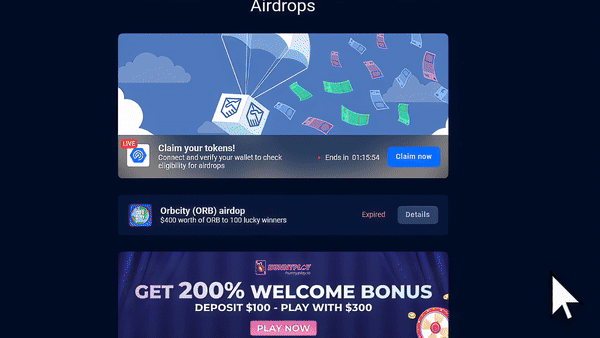
Aubrey Plaza’s last Instagram post with husband Jeff Baena before his death showed how ‘proud’ she was of him Daily Mail
source

【congo cash】 Português Agencia Brasilia
source

Director and screenwriter Jeff Baena was known for films including Life After Beth and The Little Hours, which both starred his partner, Aubrey Plaza. He also co-wrote the 2004 indie comedy I Heart Huckabees.
Saturday 4 January 2025 15:50, UK
Filmmaker Jeff Baena, the husband of actress Aubrey Plaza, has been found dead aged 47.
The US director and writer was known for films including Life After Beth and The Little Hours, in which Plaza starred.
He died on Friday, according to Los Angeles medical examiner records, viewed by E! News.
According to Deadline, the filmmaker’s family “is devastated and asks for privacy at this difficult time”.
The circumstances of his death are not yet clear.
Plaza, 40, who is known for TV series including Parks And Recreation and The White Lotus, and films such as Emily The Criminal, had been in a relationship with Baena since about 2011, and the pair married in 2021.
The pair frequently collaborated on his films. While working on his last movie, Spin Me Around, released in 2022, Plaza confirmed they had wed.
Emmy nominations: Succession, Last Of Us and White Lotus rack up 74 nods – but an actor strike looms
Emily The Criminal’s Aubrey Plaza on making a film in 21 days, playing ‘relatable’ characters, and ‘doing something different’
Aubrey Plaza hopes ‘that we go back’ to Parks And Recreation and says new film is ‘horror movie in your mind’
“So proud of my darling husband,” she wrote on Instagram in May 2021, “for dreaming up another film that takes us to italia to cause some more trouble”.
Baena was a graduate of New York University’s film school and became a production assistant for filmmaker Robert Zemeckis, known for films including Back To The Future and Forrest Gump, after moving to Los Angeles.
He also worked as an assistant editor for writer-director David O Russell (The Fighter, Silver Linings Playbook), with whom he co-wrote the 2004 indie comedy I Heart Huckabees, starring Jason Schwartzman, Naomi Watts, Jude Law, Mark Wahlberg, Dustin Hoffman and Lily Tomlin.
Keep up with all the latest news from the UK and around the world by following Sky News
In 2014, Baena made his directorial debut with Life After Beth, a horror comedy, followed by Joshy, in which Plaza also appeared, in 2016. Both films were nominated for the Sundance Film Festival’s Grand Jury Prize.
His other credits included Horse Girl and the TV series Cinema Toast.
Plaza’s representatives have been contacted for comment.
This breaking news story is being updated and more details will be published shortly.
Please refresh the page for the fullest version.
You can receive breaking news alerts on a smartphone or tablet via the Sky News app. You can also follow us on WhatsApp and subscribe to our YouTube channel to keep up with the latest news.

Can the compound found in plants slow the ageing process and help tackle Alzheimer’s? Food writer Giulia Crouch finds out . . .
There’s a new buzzword in town when it comes to health: polyphenols. While scientists have been investigating the plant compounds for years, the term has now caught the public imagination – and for good reason.
A growing body of evidence shows that eating a diet high in these clever natural chemicals offers numerous health benefits, improving everything from heart and metabolic health to lowering the risk of neurodegenerative diseases, such as Alzheimer’s.
There is also research that suggests eating more polyphenols can slow down the signs of skin ageing and reduce waist size.
Polyphenols are a group of phytonutrients (though the terms are often and erroneously used interchangeably), naturally occurring chemicals in plants that help to protect them in nature from threats such as insects and UV light, and, as it turns out, also help to protect us when we eat them.
They are found in high concentrations in fruits and vegetables with deep or vivid colours such as beetroot, blackberries, black olives, very red tomatoes and dark, leafy greens. As well as protecting the plant, phytonutrients – including polyphenols – also provide it with a strong pigment. The same is true for strong tastes: the more cough-inducing an extra virgin olive oil, the higher the likely concentration of polyphenols. Tea, coffee and dark chocolate are excellent sources.
There are thousands of types of phytonutrients – we haven’t discovered them all – such as resveratrol in red wine, ellagic acid in walnuts and catechins in tea. And single ingredients have multiple phytonutrients – tomatoes contain polyphenols (flavonoids and flavanones) as well as carotenoids (lycopene, phytoene and beta carotene).
Trials have shown they all do different things for our health. “The flavanols in cocoa are linked to reduced risk of stroke and heart attack,” explains Dr Federica Amati, head nutritionist at health science app Zoe and research fellow at the School of Public Health, Imperial College London. “Catechins in green tea can positively affect your metabolism, waist circumference and body mass index. And I really love the research around the polyphenols in hibiscus [reducing] blood pressure.”
Polyphenols, she says, are amazing, revealing the complexity of the plants we eat. “Plants don’t just offer us fibre and vitamins – there’s a huge world of compounds that have a beneficial impact on our health.”
Daniele Del Rio, professor of human nutrition at the University of Parma, Italy, says: “Several observational studies have shown that a higher intake of dietary polyphenols is associated with a reduced risk of numerous chronic diseases.” For example, one study found that those who reported eating diets rich in polyphenols had a 46% lower risk of developing heart disease than those who ate the least.
There is evidence that the consumption of polyphenols can increase blood flow to the brain as well as reduce inflammation in the body, which is why they’re thought to have the potential to combat neurodegenerative diseases.
However, our understanding of exactly how these compounds work is not yet complete.
“The mechanisms by which they operate in our bodies remain under investigation, and many researchers are approaching this issue from an incorrect perspective, neglecting how these compounds are significantly altered by our bodies,” says Del Rio. “There is still much work to be done.”
Polyphenols may be good for us because of the way they interact with, and are transformed by, our gut microbes, which effectively use them as food. Together with colleagues at Parma and the University of Glasgow, Del Rio has shown that our gut microbes turn polyphenols into “smaller, more absorbable metabolites” that help to support the body. “This research has paved the way for more rigorous studies devoted to understanding what they really do to protect us,” he says.
Sign up to Observed
Analysis and opinion on the week’s news and culture brought to you by the best Observer writers
after newsletter promotion
In fact, it is likely that a new public appetite for all things gut health has propelled polyphenols back into the spotlight. “There was a huge boom in interest in the 90s, particularly in red wine and the ‘French paradox’, which drove a lot of research into the polyphenol resveratrol,” says Amati.
Now, with more widespread awareness of the microbes in our intestines and an increased focus on the role food plays in our health more generally, polyphenols have re-entered the conversation.
Experts say the best approach is to eat a variety of plants to get a wide range of phytonutrients. This means fruits, vegetables, legumes, whole grains, nuts, seeds, herbs and spices.
“Herbs and spices are some of the most concentrated sources, with cloves containing 16,000mg of polyphenols per 100g and cinnamon at 9,700mg per 100g,” says microbiome expert, Emily Leeming. “It doesn’t have to be expensive. Wild blueberries – 650mg/100g – get a lot of polyphenol hype, but the truth is they contain seven times less than the more affordable black bean – 4,800mg/100g.”
Del Rio has been fascinated by the “incredible molecules” since he began studying them for his PhD 23 years ago. “From that point on, I never stopped researching them to try to understand their chemistry and their health effects on humans. I guess there is a lot of hype at the moment, and some researchers love to use it to conduct easy science, which is not real science.
“However, if they’re studied with rigour, I believe polyphenols will teach us new ways to take care of ourselves and our health through a balanced diet. They are not the miracle compounds solving the problem of chronic diseases, but they may certainly contribute to chronic disease prevention.”

Share
Disclosure: This article does not represent investment advice. The content and materials featured on this page are for educational purposes only.
These five low-cost cryptocurrencies, under ten cents with high growth potential, are set for significant gains by 2025.
Table of Contents
Identifying low-cost cryptocurrencies with high growth potential can unlock impressive profits for forward-thinking investors. This article reveals five digital assets currently priced below ten cents that could experience significant appreciation by 2025. Explore these hidden opportunities that might transform modest expenditures into substantial returns.
For investors seeking high-growth opportunities among low-cost cryptocurrencies, XYZVerse shines as a standout contender. Priced well under $0.10, XYZVerse offers massive upside potential, making it a top pick for those looking to transform small investments into significant returns by 2025.
XYZVerse introduces a fresh and unique concept as the first all-sports meme token. Combining the excitement of sports fandom with the viral appeal of meme culture, XYZVerse anchors a dynamic ecosystem designed to attract a broad range of users. This unique blend of utility and engagement sets it apart from other low-cost assets.
Currently priced at $0.001333 during its presale phase, XYZVerse offers a rare chance to get in early at a bargain price. By the final presale stage, the token is projected to reach $0.1 — a staggering 7,402% growth. With analysts predicting even higher returns in 2025, XYZVerse is a hidden gem with the potential to turn modest investments into substantial gains.
While other sub-$0.10 altcoins may struggle to offer real-world utility, XYZVerse combines affordability with creativity, making it a compelling option for forward-thinking investors. As the crypto market gears up for a 2025 bull run, securing a position in XYZVerse now could yield life-changing returns.
Don’t let this opportunity pass by — XYZVerse is the low-cost asset that could deliver big gains and redefine your portfolio in the coming years.
JasmyCoin (JASMY) is a cryptocurrency from Tokyo-based Jasmy Corporation, an Internet of Things (IoT) provider. They aim to empower users by giving them full control over their personal information. By combining IoT technology with blockchain, JasmyCoin creates a secure platform where users can safely store and exchange data between devices like computers, cars, and phones. This means your data becomes your asset, and you decide how it’s used or shared.
JasmyCoin stands out in the current market because it tackles the crucial issue of data sovereignty. Unlike other cryptocurrencies that focus on finance or smart contracts, Jasmy is all about protecting personal information. With data breaches and privacy concerns on the rise, a platform that prioritizes data security is timely. By decentralizing data storage using technologies like IPFS (InterPlanetary File System), JasmyCoin offers a robust and user-friendly environment. In a market where investors seek real-world utility and security, JasmyCoin presents an attractive opportunity.
Shiba Inu (SHIB) began as a meme-inspired cryptocurrency but is proving to be more. Launched in August 2020 by the mysterious Ryoshi, SHIB runs on the Ethereum blockchain, tapping into its vast decentralized network. Unlike Dogecoin, which has its own blockchain, SHIB’s Ethereum base allows for more complex features. Half of its massive one quadrillion tokens were sent to Ethereum co-founder Vitalik Buterin. His donation of a large portion to the India Covid Crypto Relief Fund and burning of 40% of the supply brought SHIB into the spotlight.
SHIB’s Ethereum integration opens doors to real utility. The development of ShibaSwap, a decentralized exchange, shows SHIB’s aim for practical use. Plans for a future NFT platform and community-driven governance are in the works. In the current market, SHIB’s potential beyond hype makes it interesting. While memecoins often rely on social buzz, SHIB’s tech features could give it staying power. Compared to other coins, SHIB’s Ethereum connection and active development suggest it could be more than a passing trend.
PEPE is a new memecoin on the Ethereum blockchain, inspired by the famous Pepe the Frog meme created by Matt Furie. It’s designed to capture the playful spirit of internet culture. Like Dogecoin and Shiba Inu, PEPE aims to join the ranks of top meme-based cryptocurrencies. It appeals to the crypto community with a no-tax policy and a straightforward approach, embracing its identity purely as a memecoin without any complicated features.
In the spring of 2023, PEPE skyrocketed, reaching a market cap of $1.6 billion at its peak. Early investors saw huge gains, and a strong community formed around the coin. This surge kicked off a “memecoin season,” with many new meme-based tokens experiencing wild price swings. PEPE’s roadmap includes plans for more exchange listings and a “meme takeover.” While the crypto market is always unpredictable, many enthusiasts are excited about PEPE’s potential, especially with the upcoming Bitcoin halving that could spark a new bull market. In the current cycle, PEPE stands out as a symbol of the fun and frenzy that memecoins bring to the crypto world.
In June 2021, Elon Musk tweeted about naming his pet Shiba Inu “Floki.” This simple tweet sparked the creation of the Floki Inu coin. What began as a meme has evolved into Floki, a cryptocurrency with real-world goals. Floki aims to make a difference by building schools in countries like Laos and Nigeria. Recognized by The Economic Times as a top meme coin to watch in 2023, Floki is expanding its reach and influence in the crypto world.
Floki offers more than just a catchy name. With projects like the NFT metaverse game Valhalla and its DeFi service FlokiFi, it brings new utility to crypto users. Partnerships with companies like NOWPayments and the introduction of the prepaid Floki Card allow people to use FLOKI tokens for everyday transactions. This sets Floki apart from other meme coins that lack real-world applications. In a market where utility and real-world use are becoming more important, Floki’s expansion into NFTs, DeFi, and practical uses makes it an attractive option to consider.
Though JASMY, SHIB, PEPE, and FLOKI are promising, XYZ’s meme-sports blend, aiming for 20,000% growth, early adopter advantage, and community focus make it exceptional in 2024’s bull run.
For more information, visit the XYZVerse website and follow the project on X and Telegram for the latest updates.
Disclosure: This content is provided by a third party. crypto.news does not endorse any product mentioned on this page. Users must do their own research before taking any actions related to the company.
Read more about
Deep Dives
Social media is finally breaking free from the shackles of Big Tech | Opinion
From print to TikTok: PR perspectives on the end of media and influencers | Opinion
China continues to tighten crypto regulations. Do other countries take notes?
Crypto charts to watch for 2025: Bitcoin, Solana, and XRP
What does 2025 have in store for crypto and digital assets? | Opinion
Top five blockchain analytics trends for 2025 | Opinion
Is there a crypto thaw in Russia and why?
African crypto revolution continues as Ethiopia ranks among global BTC mining leaders
Top 5 reasons why Ethereum could take off in 2025
Cardano co-founder explores Delimited continuations: What does it mean for Cardano?
Related News
Forget Bitcoin dominance: This presale meme coin’s 30,000% surge is turning heads
These 3 meme coins are poised to explode in 2025
FXGuys presale: A strong utility coin with potential to compete with Cosmos & Solana
Get crypto market analysis and curated news delivered right to your inbox every week.
You have successfully joined our subscriber list.

Although herbs and plants have been used for medicinal purposes for thousands of years, they have recently become very popular thanks in part to posts on the social media platform
While herbal supplements may be considered “natural,” they are not inherently safe and don’t require review or
Now, a new study from researchers at the University of Michigan reports that an estimated 15.6 million U.S. adults — or 5% — have taken at least one herbal supplement in the last 30 days that might be damaging to their liver, or hepatotoxic.
The study was recently published in the journal
For this study, researchers analyzed data from more than 9,500 U.S. adults with an average age of 47.5 who took part in the
Scientists focused on study participant use of six herbal supplements considered from past research to be
“Potentially hepatotoxic botanical products are the products that contain plant-based ingredients which have been implicated as potential causes of liver damage,” Alisa Likhitsup, MD, MPH, clinical assistant professor in the Department of Internal Medicine in the Division of Gastroenterology and Hepatology at the University of Michigan and lead author of this study explained to Medical News Today.
“How these products cause liver damage is not yet known but it is likely due to metabolism that occurs in the liver after the products were consumed,” she said.
“As a practicing hepatologist, I have seen patients who had liver injury from taking dietary supplements and some were fatal which required emergency liver transplant. Data from Drug Induced Liver Injury Network reported the rates of liver injury due to botanical products has been on the rise from 7% in 2004-2005 to 20% in 2013-2014. Therefore, I had (an) interest to analyze the prevalence and see how many Americans were consuming these products,” Likhitsup continued.
At the study’s conclusion, Likhitsup and her team found that about 58% of all participants reported using an herbal or dietary supplement at least once within the 30-day period.
About 5% of participants said they had taken at least one of the six potentially hepatotoxic botanicals in the past 30 days. When applied to the whole U.S. population, this percentage translates to about 15.6 million adults.
This potentially hepatotoxic botanical use, researchers say, is similar to the estimated number of people prescribed potentially hepatotoxic drugs such as nonsteroidal anti-inflammatory drugs (NSAIDS) and a drug used to lower bad cholesterol levels called
“We hope our results will increase awareness among patients and providers about these potentially liver toxic ingredients being consumed regularly among Americans and the dietary supplement products available in the market are not strictly regulated,” Likhitsup said.
“We still do not have the data about the risks of liver injury when consuming one of these products, so it will be difficult for physicians to provide this information that we do not know. And because the available dietary supplement products are not strictly regulated, each product contains multiple ingredients with more than 50% mislabeled. So, it is difficult to do research on this topic.”
— Alisa Likhitsup, MD, MPH
Some research suggests the
After reviewing this study, Rosario Ligresti, MD, FASGE, chief of Gastroenterology at Hackensack University Medical Center in New Jersey, told MNT that while hepatotoxic botanical products are plants or plant-derived products, given a lack of regulatory oversight on the manufacturing and the lack of testing on these products, consumers need to know they may be causing their bodies more harm than good by consuming them.
“They are completely unregulated [before going to market] so my reaction is that I am not surprised that they can pose significant health risks, particularly for the liver because they are thought to interfere with the liver’s ability to process and detoxify harmful substances,” Ligresti continued. “This can lead to a buildup of toxins in the liver, which can cause inflammation, cell death, and in some severe cases, liver failure.”
Ligresti said that every physician should be talking with their patients about the risks of these types of products and asking if they are taking any of them.
“Because ‘supplements’ are supposedly made from natural ingredients, people have a false sense of security — they may believe that because the ingredients are ‘natural,’ they must be safe. However, it’s important to remember that natural does not always equal safe. Some natural ingredients can be toxic in high doses or interact with medications.”
— Rosario Ligresti, MD, FASGE
“This needs to be explained to patients along with the fact that the supplement industry is not as heavily regulated as the pharmaceutical industry. This means that companies are not required to prove the safety and effectiveness of their products before they are sold. This can lead to consumers purchasing products that are not well-studied or that may contain harmful ingredients,” he added.
MNT also spoke with Monique Richard, MS, RDN, LDN, a registered dietitian nutritionist and owner of Nutrition-In-Sight about this study.
“The results of this study are concerning and confirm what I often observe in practice, on social media, and in the healthcare community,” Richard said. “Unfortunately, for a number of reasons, from influencers to clever marketing, to scare tactics and everything in between the market is ripe with products touted to ‘cure,’ ‘solve an ill,’ or ‘enhance a stated outcome,’ when in reality most of the time it is not that simple.”
“The FDA does provide oversight of supplements but specifically related to the potential danger of supplement ingredients on the market which is vastly different than being vetted and ‘approved by the FDA’ for quality, efficacy, safety, and benefit,” she continued.
“The market is rampant with supplement products that are adulterated, compromised, expired, and in some cases, even dangerous. Many times, individuals are self-diagnosing or reading misleading or incorrect information and may be unaware of what they are purchasing, how it may affect them directly, or understand the possible associated side effects or concerns may be.”
— Monique Richard, MS, RDN, LDN
For readers considering taking an herbal supplement, Richard said to first and foremost work with their healthcare team, including their physician, pharmacist, registered dietitian nutritionist (RDN), or other credentialed herbalist or botanist practitioners, to really understand what botanicals may be best suited for their current condition and goals.
She also advised taking a “food-first approach” instead of herbal supplements, such as adding active ingredients like turmeric or green tea in a culinary form, depending on the person’s specific needs and goals.
“Words of wisdom: Turn to your trusted nutrition and healthcare professionals before purchasing promises in a bottle that could be secretly sabotaging your health, your liver, and wallet,” Richard said.
Share this article
OUR BRANDS

Sign in
Sign in
Lumia $LUMIA Airdrop Heroes
Follow
—
Listen
Share
Lumia (LUMIA) is a new meme coin on the Solana blockchain, aiming to replicate the success of previous meme coins by engaging the community through an airdrop. Here’s a detailed guide on how you can participate and claim your LUMIA tokens.
Participating in the Lumia airdrop is a straightforward process. By purchasing tokens during the presale and ensuring your wallet is connected, you can easily claim your LUMIA tokens once the airdrop occurs.
—
—
Help
Status
About
Careers
Press
Blog
Privacy
Terms
Text to speech
Teams

India is home to millions of stray dogs and cats, making it a practical and humane choice to rescue and adopt them instead of buying from breeders. “Adoption helps address the issue of stray animals, reduces abandoned pets, and curbs unnecessary breeding,” said Dr Piyush Patel, director of companion animals and engagement at Humane Society International in India, and added that commercial breeders often prioritise profit over animal welfare, leading to questionable behaviour and health problems in pets.
However, in many households, cats, dogs, and fish remain the most common pets. Yet, there is a lesser-known fact—some animals are legally prohibited from being kept as pets in India. Sumanth Bindumadhav, director of the wildlife team at Humane Society International in India, listed 10 species that cannot be kept as pets in our country:
Star Tortoises: Known for their attractive shell patterns, star tortoises are often sought after as pets but are protected under the Wildlife Protection Act, 1972.
Parakeets: Popular varieties like rose-ringed, Alexandrian, and plum-headed parakeets are protected species, making it illegal to keep them as pets.
Snakes: Many snake species, such as red sand boas, are in high demand in the pet trade but are protected and cannot legally be kept as pets.
Jackals: Often associated with superstitions about good luck, keeping jackals or their body parts is illegal.
Slender Loris: Their small size and cute appearance make them popular in the pet trade, but they are protected under Indian law.
Macaques: Bonnet macaques, frequently bought as babies, are abandoned when they grow challenging to handle. It is a protected species as well.
Munias: Multiple species of munias, ranging from scaly-breasted to others, are very popular as pets but protected under the law and hence illegal to keep as pets.
Owls: Barn owls and spotted owlets are popular but are crucial to ecosystems and are protected by law.
Jungle cat: Jungle kittens are often sold as house cats to unknowing individuals. These are protected by law and hence prohibited as pets.
Spiny-tailed lizards: These lizards, endemic to west India, are critical to their ecosystem and are illegal to keep as pets.
Beyond their legal protection, these animals play critical roles in their ecosystems and have highly specific needs based on their natural habitats. Keeping them as pets compromises their health and welfare, said Bindumadhav.
Stay informed with access to our award-winning journalism.
Avoid misinformation with trusted, accurate reporting.
Make smarter decisions with insights that matter.
📣 For more lifestyle news, click here to join our WhatsApp Channel and also follow us on Instagram
Payal Kapadia’s film ‘All We Imagine As Light’ has been successful in the festival and awards circuit, but it has faced difficulties in finding an audience in India. Here’s a quick look on how Payal tried her best to circumvent these challenges
This No Is Already Registered.
Thanks For Registered Mobile No.

The 7 worst movies of 2024, ranked Yahoo Entertainment
source